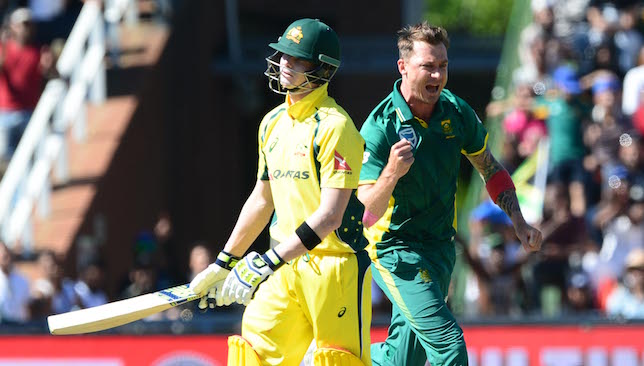
The Aussies are in trouble. From being the world champions and the No. 1 Test team in the world, the men from Down Under have suddenly lost their way and the results have been startling. What has stood out is the steep rise and fall in fortunes, which makes it an extremely strange year for them.
The beginning of 2016 was very promising for the Australians, with two massive wins against the Kiwis in Tests. Their record in one-dayers was even better, with Steven Smith’s boys winning the first four matches of the year.
T20s were a different story with the team losing all three games against India. However, following the World T20 in India, where they were knocked out by the hosts, their results went to the other extreme.
A three Test series in Sri Lanka resulted in a whitewash – their third straight against Asian teams. It was a shocking performance as they were the No. 1 Test team at the time and were playing a side placed seventh in the rankings and against whom they had lost just one Test in the past. But a hobbling Rangana Herath stood tall and ensured there was no escape from defeat.
However, the ODI skirmish against the Lankans took a different turn as the Australians took the series 4-1. The Aussie fans must have thought that at least the ODI team was on track – something to be expected, given they are the reigning world champions.
But the tour of South Africa turned that notion on its head. The Proteas have been in a state of flux, with a new quota system in place where they need at least six players of colour in the national team. Not only that, their star player AB de Villiers continues to fight to be fit after a prolonged elbow injury. All that, however, didn’t seem to matter as a rejuvenated Proteas handed the Aussies a humiliating 5-0 whitewash.
While David Warner scored two centuries for the Australians, the rest of the team couldn’t match the Proteas on their home turf. What has stood out so far is the massive gulf that exists between the batting and bowling of the Australians.
Australia in 2016:
— Broken Cricket (@BrokenCricket) October 13, 2016
T20: 0-3 Whitewash vs Ind
Test: 0-3 Whitewash vs SL
ODI: 0-5 Whitewash vs SA
Against South Africa, the men in the gold fielded a heavyweight line-up that had Warner, Aaron Finch, Steven Smith and George Bailey at the top of the order. Those men can take on any bowling in any conditions.
Sadly, their bowling attack is equally shallow. Chris Tremain, Scott Boland Joe Mennie aren’t the most effective limited overs bowlers going around and in the absence of Mitchell Starc, they won’t give opposition any sleepless nights.
But what set the Aussies back against the Proteas was that even their experienced batting line up failed to make up for the lack of bowling firepower. In the five-match series, while Warner was the leading run-scorer, the next five top run getters were all South Africans. So whatever the Australians managed, South Africa always had more.
The Proteas also had a more potent bowling attack. Granted, the likes of Dale Steyn and Kagiso Rabada couldn’t match the efficiency of their team-mate Kyle Abbott (six wickets from two games at an economy of 4.88) but their bowling still had a lot more experience than the Aussies and it showed in the results. This reminds me of the time when India had arguably the strongest batting line-up in the world but not the most threatening bowling attack.
While the likes of Virender Sehwag, Sachin Tendulkar, Yuvraj Singh and MS Dhoni could tear apart any line up, they had to accumulate extra runs as Ishant Sharma, Irfan Pathan, RP Singh and the likes regularly leaked runs unless the wicket had extra spice in it.
What is worrying is the dry look of Australia’s talent pool, especially in the fast bowling department, which was never the case. They always had the pace and variety. Those days seem a long time ago.
While setbacks are normal in sport, two crushing whitewashes in a year are not a good sign, and that too in different formats. It shows that when the going is good, the Australians are on the mark but once things get a bit difficult, it all goes downhill pretty fast. And unless they find some bowling firepower, or Mitchell Starc stays completely fit for all formats for a couple of seasons at least, the results will be just as bewildering.
What should also worry the Australians is that they have a three-Test series against the Proteas at home next month and a four-Test tour of India lined up at the beginning of next year. Proteas at home might still be a close contest, but India looks like a nightmare in waiting.
They have already endured a 4-0 whitewash at the hands of the Indians in 2013 and given the way India have raised their game in the longest format, and especially the form shown by their spinners, the Aussies have a mountain to climb.
Looking at Australia’s recent performances, avoiding a whitewash should be their main target for the immediate future.